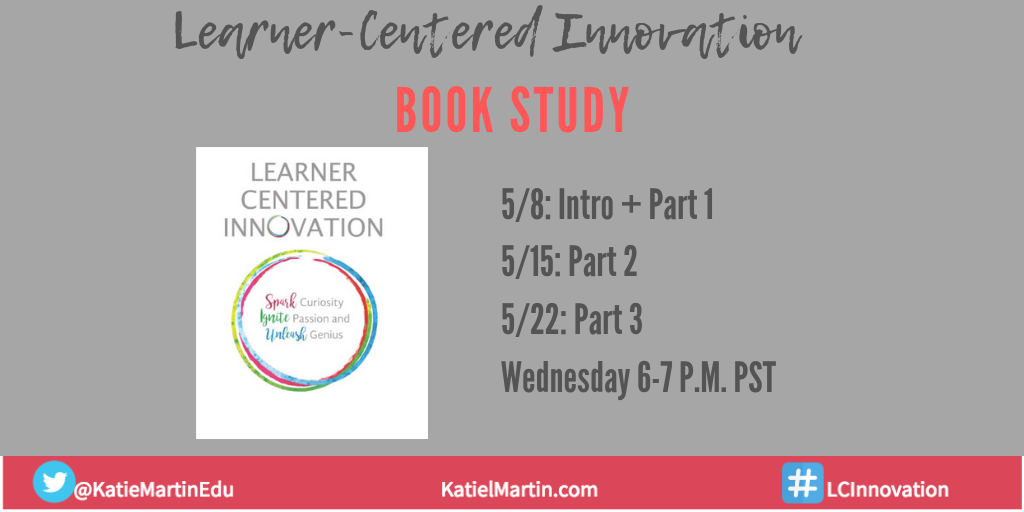You are invited to join the end of the year Learner-Centered Innovation book study!
About Learner-Centered Innovation
What if education could be better–for students and for educators?
Our changing world demands creative thinkers and collaborative problem solvers, but too often, schools stifle growth and discovery in favor of getting through the curriculum or preparing for “the test.” Learning opportunities and teaching methods must evolve to match the ever-changing needs of today’s learners. When we tell learners to complete an assignment, we get compliance. When we empower learners to explore and learn how to make an impact on the world, we inspire problem solvers and innovators. This required change in education involves more than providing training for administrators and teachers to implement new curriculum or programs and resources; it demands that we, as teachers and leaders, create an environment where learners at every level are empowered to take risks in pursuit of learning and growth rather than perfection.

This book is for you if you are wondering . . .
- What if learners were valued for their diverse talents and not just our traditional model of “smart”?
- What if I could create new and better experiences for those I serve?
- What if I could inspire students to learn, to discover their passions, and to share their ideas with the world?
This is an opportunity to connect, share and learn with educators in your own schools, districts and around the world. As the year winds down I’m hoping that you will be inspired to maximize time with learners and create experiences that ignite passion, spark curiosity and unleash genius.
Join the Book Study
Here are 3 ways you can participate or please feel free to create your own version that works for you and your colleagues!
#1: Twitter Chat
I will host a Twitter chat to discuss key insights, reflections and most importantly for you to share your ideas and questions! We will go through one part of the book each week.
Here is the schedule:
- May 8- What If? + Part 1
- May 15- Part 2
- May 22- Part 3
Each week we will review key topics related to each part of the book. I’ll also encourage people to post their own questions and reflect and share their ideas and examples in blogs, images or other ways that support your learning process.
#2: Face-to-Face Book Club
Book clubs are better with friends! Create your own Learner-Centered Innovation Book Club with colleagues from school, friends across your district or across the world (if you are interested in bulk orders, please email paige@impressbooks.org). Sign up here to get a copy of the Learner-Centered Innovation Conversation Guide to support you as you facilitate your book study.
#3: Facebook
I’ll post a video prompt each week on Sunday in the IMMOOC Facebook group (if you aren’t a member you can join here) and you can post your own reflections or blogs to share your thoughts at a time that is most convenient for you.
Whether you choose all or one of the book club options, make sure you use #LCInnovation on social to connect with other educators and learn together.
I look forward to the opportunity to connect and learn with all of you!
Best,
Katie

